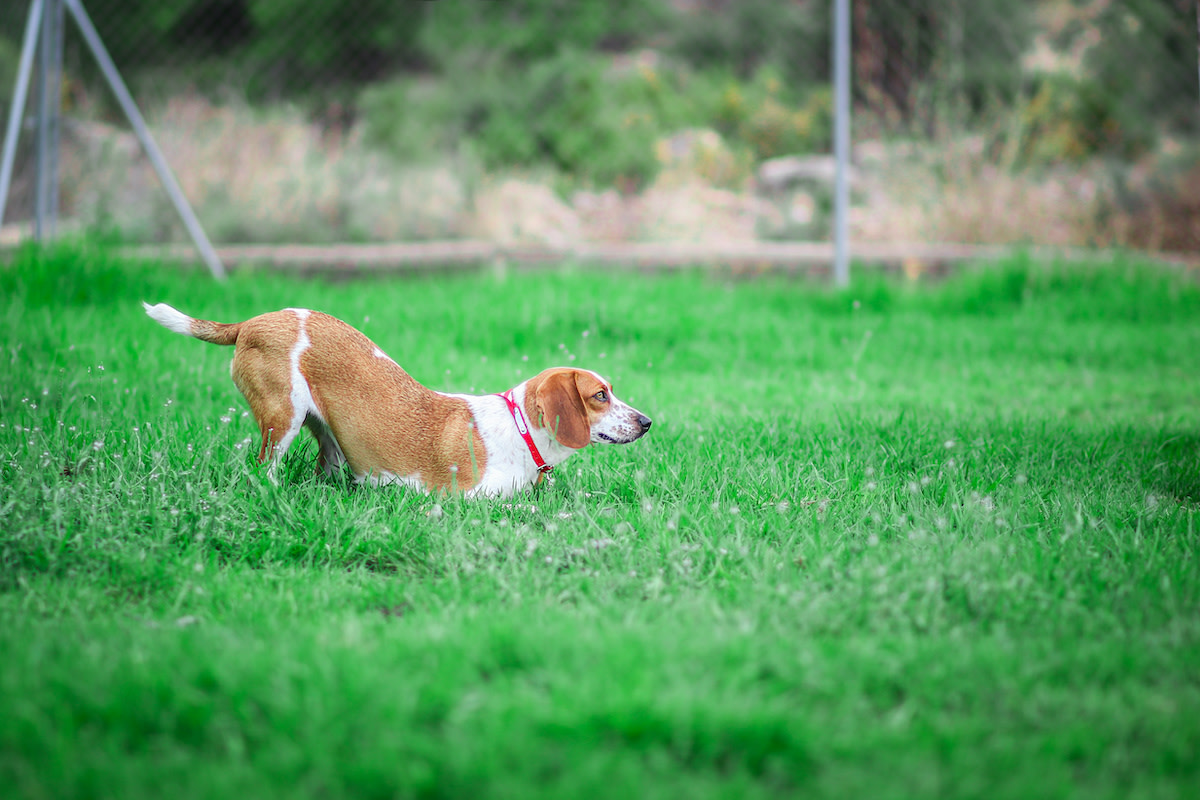Play Bow: 3 Reasons Dogs Bow at Playtime
Written by MasterClass
Last updated: Jun 13, 2022 • 2 min read
Discover what your dog’s play bow means and what this behavior communicates to other pets at the dog park.
Learn From the Best
Brief Overview of Understanding How Dogs Communicate
Dogs communicate with their owners and fellow pets in several ways. Dogs rely on vocalizations—a complex array of barks, grunts, growls, and yips—that indicate different wants and moods. They also communicate through body language. The position of a dog’s ears or a wagging tail are visual signals about their wants and needs, as is the posture called a “play bow.”
What Does It Mean When a Dog Bows?
When a dog play bows, it crouches with its front legs extended and front paws and chest pressed against the ground. Its rear end rises in the air with a wagging tail, and the dog’s head is low to the ground with a facial expression that displays a broad, friendly smile. Play bows are common gestures for all domestic dog breeds as well as other canids, the family of close relatives that includes wolves, coyotes, and foxes.
Typically, this gesture is a play signal to a dog owner or fellow canine. When your pooch catches another dog’s attention by barking, they often follow this with eye contact and sniffing before your dog bows in front of the other dog to indicate its interest in play. If the new dog accepts the gesture, play begins and usually involves bouncy movements, pouncing, and harmless nipping.
Why Do Dogs Bow? 3 Reasons Why Dogs Bow at Playtime
Animal behaviorists state that dogs bow at playtime to:
- 1. Invite friendly play: For dogs, the primary function of play bows is to invite another dog or person to play with them. Extending and pressing their front legs against the ground tells the other dog they feel excitement. Crouching low on the ground removes any sense of social hierarchy from the play: This is how a dog tells its potential playmate it’s friendly and submissive.
- 2. Promote more play: If a play partner grows tired, your dog may play bow again to show that it wants to continue the play session.
- 3. Socialize: This dog behavior can relate to different social interactions. For example, a dog may play bow to another to apologize for rough play. Play bowing is also a crucial element in puppy play and dog socialization because it teaches young dogs about proper behavior. By initiating play with an adult dog, puppies learn which types of behavior and energy levels are acceptable in social situations.
Want to Learn More About Training the Goodest Boy or Girl?
Your dream of having a dog who understands words like “sit,” “stay,” “down,” and—crucially— “no” is just a MasterClass Annual Membership away. The only things you’ll need to train up a well-behaved pup are your laptop, a big bag of treats, and our exclusive instructional videos from superstar animal trainer Brandon McMillan.
